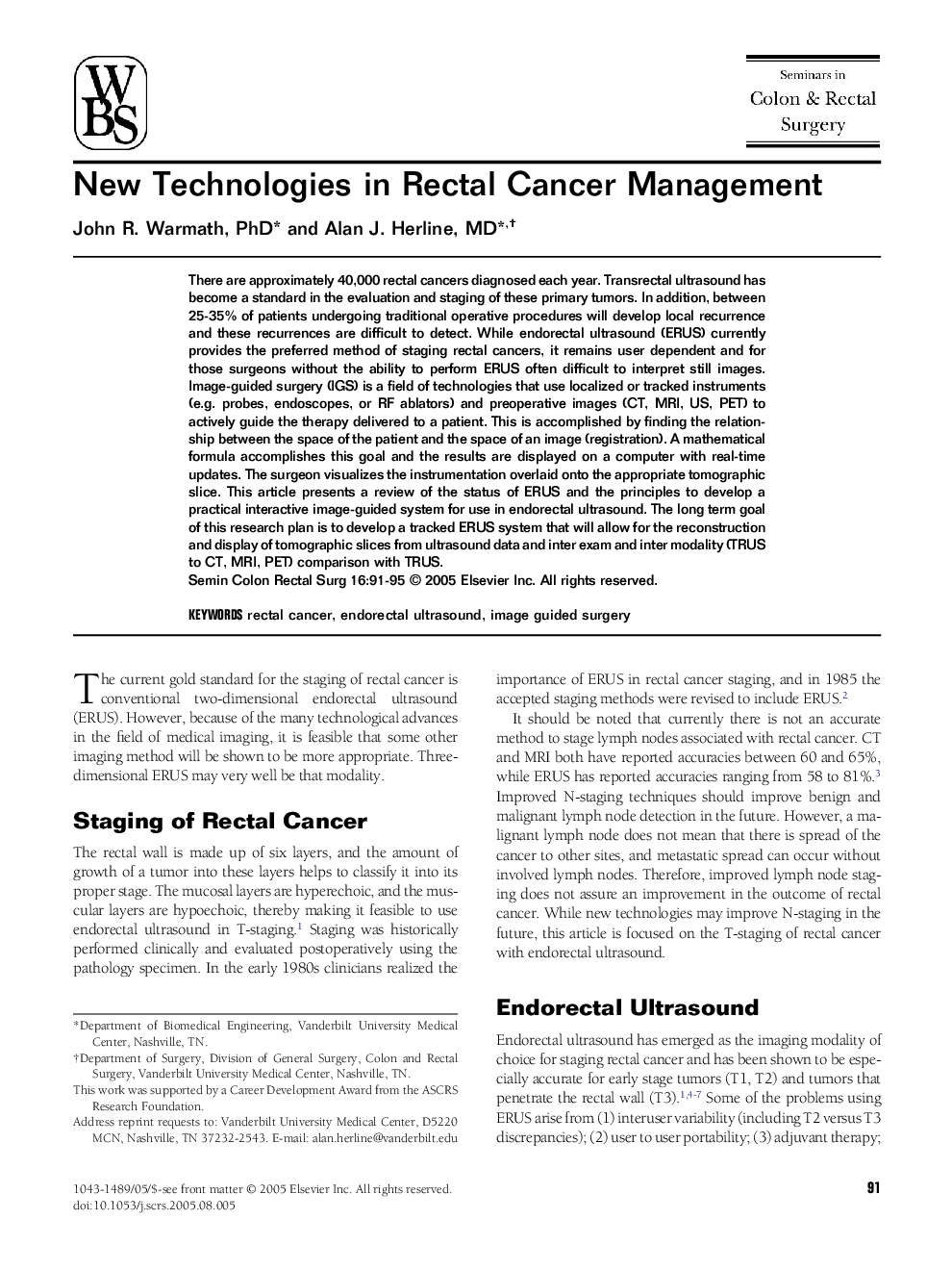| Article ID | Journal | Published Year | Pages | File Type |
|---|---|---|---|---|
| 9256478 | Seminars in Colon and Rectal Surgery | 2005 | 5 Pages |
Abstract
There are approximately 40,000 rectal cancers diagnosed each year. Transrectal ultrasound has become a standard in the evaluation and staging of these primary tumors. In addition, between 25-35% of patients undergoing traditional operative procedures will develop local recurrence and these recurrences are difficult to detect. While endorectal ultrasound (ERUS) currently provides the preferred method of staging rectal cancers, it remains user dependent and for those surgeons without the ability to perform ERUS often difficult to interpret still images. Image-guided surgery (IGS) is a field of technologies that use localized or tracked instruments (e.g. probes, endoscopes, or RF ablators) and preoperative images (CT, MRI, US, PET) to actively guide the therapy delivered to a patient. This is accomplished by finding the relationship between the space of the patient and the space of an image (registration). A mathematical formula accomplishes this goal and the results are displayed on a computer with real-time updates. The surgeon visualizes the instrumentation overlaid onto the appropriate tomographic slice. This article presents a review of the status of ERUS and the principles to develop a practical interactive image-guided system for use in endorectal ultrasound. The long term goal of this research plan is to develop a tracked ERUS system that will allow for the reconstruction and display of tomographic slices from ultrasound data and inter exam and inter modality (TRUS to CT, MRI, PET) comparison with TRUS.
Related Topics
Health Sciences
Medicine and Dentistry
Gastroenterology
Authors
John R. PhD, Alan J. MD,
